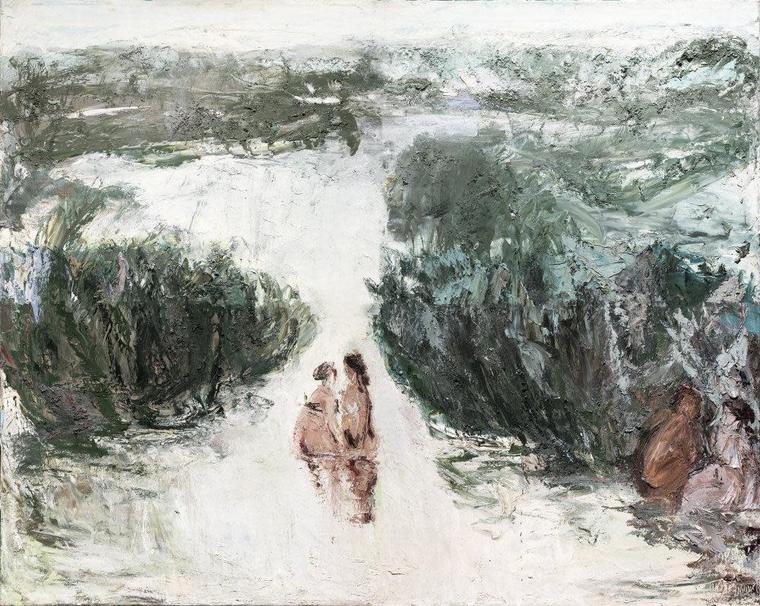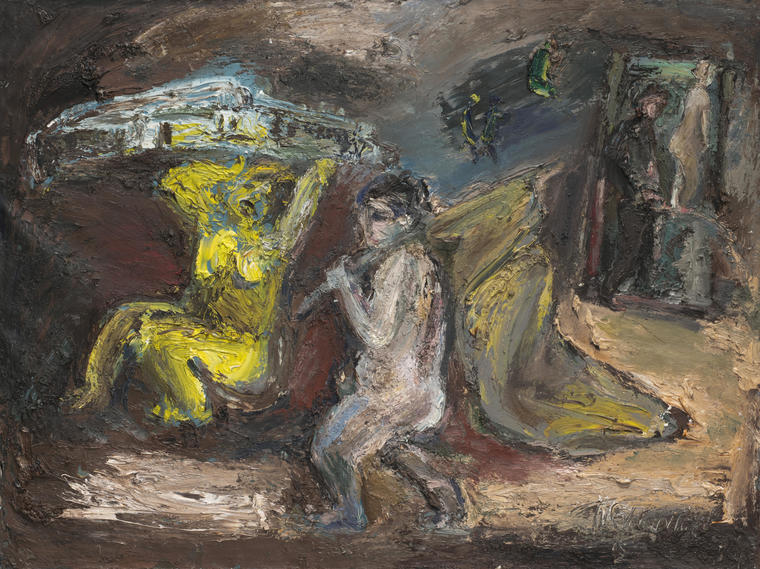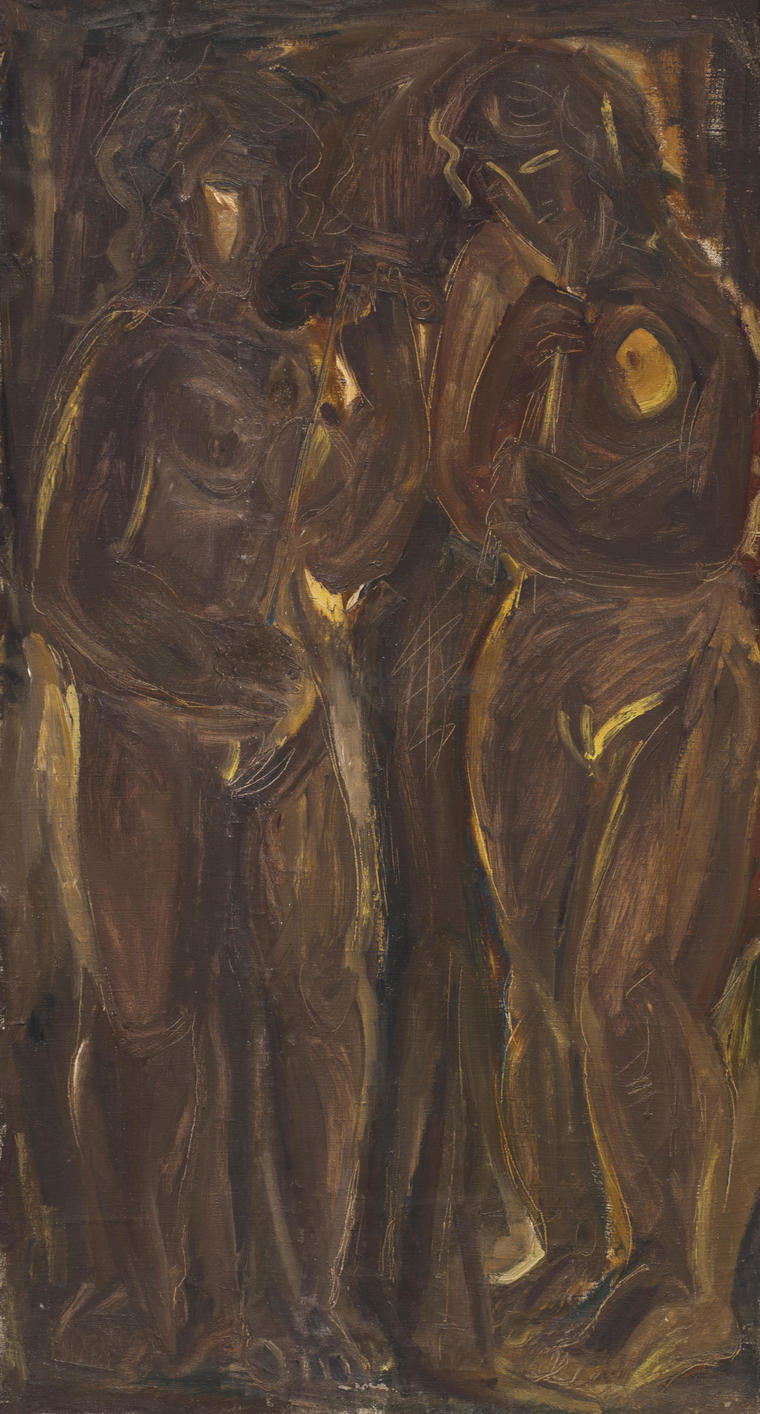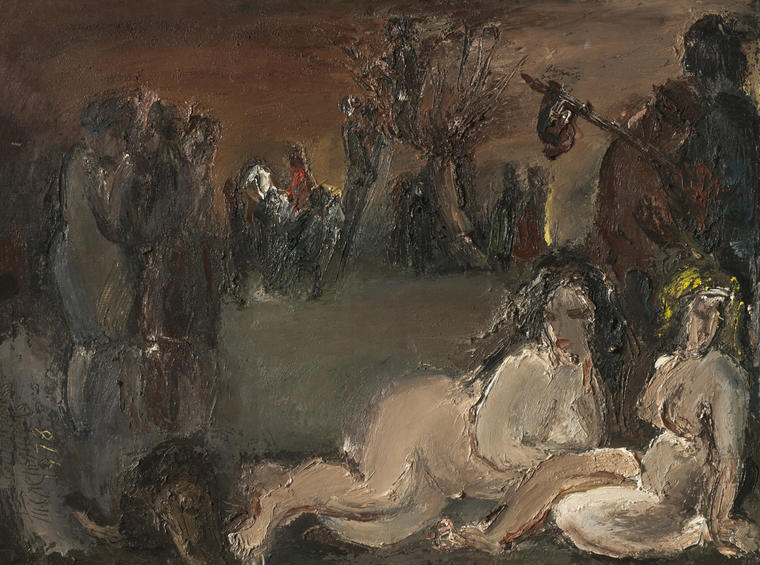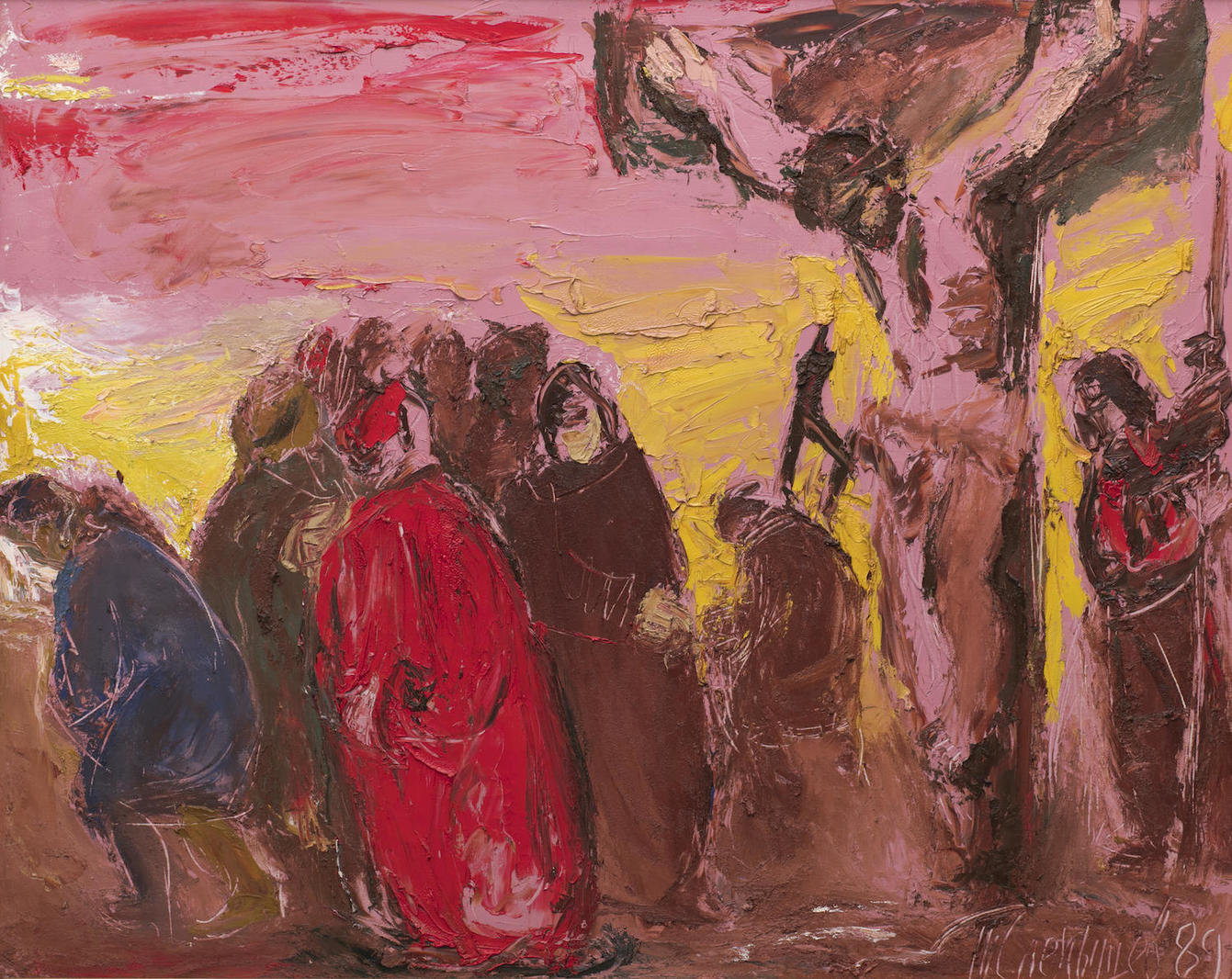
It is customary to call Anatoly Slepyshev the master of «lyrical expressionism», but the degree of expression of a particular work by the artist was largely determined by the tasks of the topic chosen by him. Among the most expressive in his work are scenes of the tragic events from evangelical history: «The Last Supper», «Carrying the Cross», «The Crucifixion». The painting «Old Testament» is among them. Against the sky in the golden rays of the setting sun, the crucified Christ is depicted. His figure, filling almost the entire right side of the canvas, seems to be much larger than the figures of the people around him – this technique, which allows you to place the right semantic accents, was typical for medieval art. To the right of the cross stands the centurion Longinus, leaning on the spear with which he pierced the body of Jesus. His figure in red and black clothes, placed at the very edge of the picture, is opposed to the main group of characters. It is also remarkable that only his face among the others seems to be worked out in detail. With bright strokes, the artist singles out two more figures in the foreground. If we assume that Slepyshev follows traditional western iconography, then the images of the Mother of God (in a blue cloak) and John the Theologian, the beloved disciple of Christ (in red) are in front of us. The half-bent figure depicted between the crucifix and a group of people is Saint Nicodemus or Joseph of Arimathea. A black staircase, through which the body of Jesus will be removed from the cross, rises above his back. The sky, bursting with red shades, as if announces the shed blood of the Savior. V

